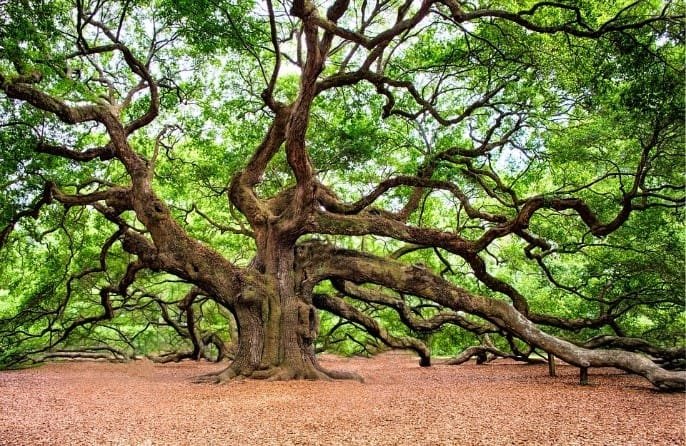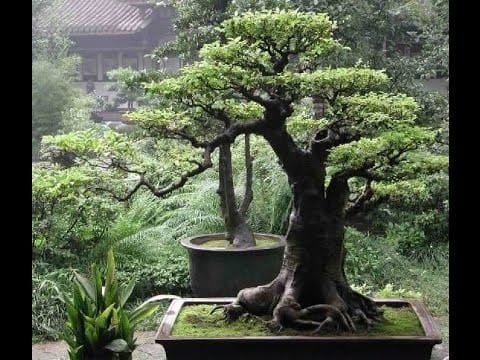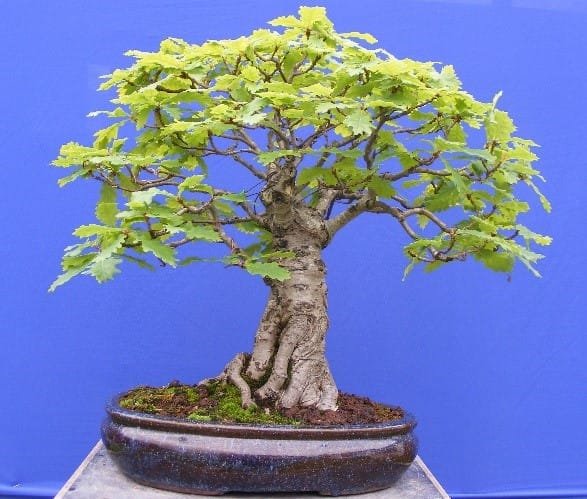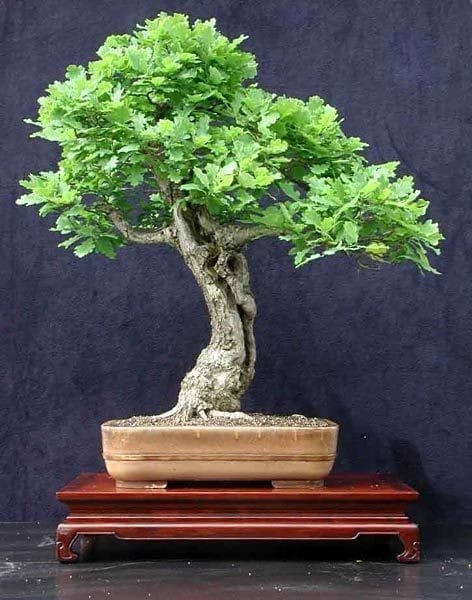It might be surprising to find out that oak trees were not part of the traditional plants introduced to the art of bonsai for quite a long time.
Keeping in mind that oak trees are ubiquitous in Japan, many might consider it confusing why these majestic trees were not popular as bonsai species.
There is a logical explanation on that matter, though, as the rather broad leaves of some types of oaks make them somewhat less good suited in the practice of miniature trees’ cultivation.
However, one cannot only learn how to bonsai an oak sapling in a breeze but will certainly find great pleasure in taking care of this exquisite and extremely popular tree variety.
What you Need to Know about Oak Trees before Introducing them to Bonsai

Image Courtesy of pixabay.com
Just like a baby duck is called a duckling, the suffix “-ing” that comes from old English is used at the end of words to convey the meaning of “youngster” or “young,” as in the case of sapling – a young tree.
Classified in the genus Quercus, oak trees are commonly found throughout the temperate zones of the Northern Hemisphere. There are approximately 500-600 species of oaks across the globe.
It was in the 1950s when Californian bonsai practitioners started to popularize bonsai oak trees and experiment with the best cultivation and design practices on that matter.
Not all oak trees varieties are equally well-suited to the art of bonsai, though. As briefly mentioned above, some species have rather broad leaves.
More importantly, oak trees’ branches are prone to fractures, so bonsai tree gardeners need to be especially careful and precise when pruning and training an oak bonsai. Last but not least, oaks are rather sensitive in terms of root trimming and pruning tasks.
On the bright side, picking a suitable type of oak tree can help you turn the gentle oak sapling into a stunning miniature piece of art.
The large, twisted trunks are mesmerizing and leave a deep imprint on the contemplators’ senses when gazed upon.
Two of the most favorable oak varieties to introduce to the art of bonsai include Quercus suber (cork oak) and Quercus agrifolia (coast live oak).
The rich spiritual symbolism embedded in oak trees has always had a special place in the collective memory of many civilizations and nations worldwide. For instance, the king of all gods in Greek mythology, Zeus, considered oak trees sacred.
One unusual story from the world of oak trees is that of a romantic farmer who planted thousands of oak trees, leaving a gap-shaped like a heart in the self-planted oak forest to commemorate his beloved wife after she passed away.
Considering the sacred, mystical and sentimental properties attributed to oak trees, making a bonsai out of an oak sapling can just as well purify your mind and soul and bring peace, prosperity and wealth in your life.
Video by: Did You Know? – Farmer Plants Thousands of Oak Trees to Honor Late Wife
Source: youtube.com
Making an Oak Bonsai Tree from Sapling Step-by-Step

Step 1: Choose the Best Oak Sapling
You need to choose an oak sapling that is no more than 2 feet in height and no less than 6 inches in height.
You want to start your bonsai oak tree by working with the sapling from mid-January to mid-April when the young tree has not entered the new growth season yet.
Check the main leader. It should be soft enough to bend easily without breaking it. Get equipped with high-quality bonsai soil and choose a suitable pot for your oak sapling.
Step 2: Repot and Prune your Oak Bonsai Tree
As a rule of thumb, a 1-gallon container can make a perfect fit for the recently bought or obtain from the wild oak sapling.
Once repotted, use sharp, small, thin pruning shears or scissors to remove the most vigorous shots on the upper levels of the sapling. Do make sure to keep fragile shots intact, though.
Next, trim about 80% and up to 90% of the leaves using thin, sharp scissors/shears. Do not clip the leaves positioned at the very ends of each branch. Also, do not remove the leaves on the leader. Following these pieces of advice will help to encourage budding out near the trunk.
Step 3: Wire and Fertilize your Oak Bonsai
For helping your oak sapling grow into a spectacular bonsai, you can wire it using aluminum wire. Wrap the wire around the branches, including the leader.
When bending and/or positioning the branches, be extra careful not to damage the bark, as it can be easily split apart.
All that’s left to do next is to place your oak-bonsai-to-be in partial shade and water it gently. The fertilization routine depends on the type of fertilizers used, however, it should not begin before a full month has passed from repotting the oak sapling.
When the dormant stage begins by the end of the autumn season, you need to remove some of the nodes in order to encourage budding located close at the trunk. For this purpose, leave only 1-2 nodes on the upper branches but more on the lower ones.
As soon as the second year of training begins, you want to repot your oak bonsai, carefully prune and groom the roots, and keep shaping it by wiring and bending the branches until you reach the desired appearance.
Video by: Chris Myers -bonsai, oak growing tip. Apple and boxwood…
Source: youtube.com
Final Thoughts

Image Source: Pinterest
The Canadian entrepreneur, philosopher, and author Matshona Dhiliawayo share a beautiful perspective on oak trees as daily reminders that “great things often have small beginnings.”
The same goes to learning how to bonsai an oak sapling – no matter how small and humble you start, keep the idea of the miniature tree you want to nurture in your heart and mind, for this is how bonsai is born – not only through practice but through love, care, and the firm belief that the best is yet to come.


